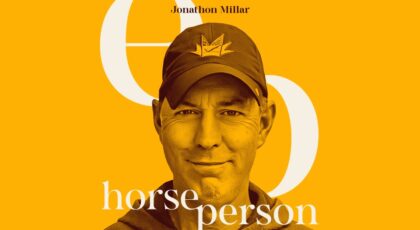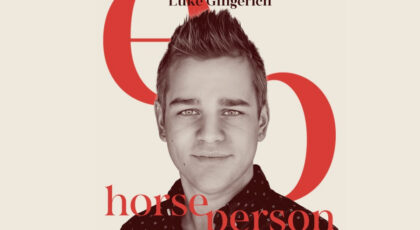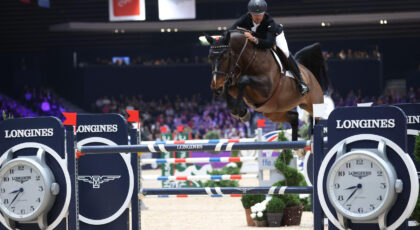When I was about 21 or 22, I called my mom early one morning on my drive to the barn.
I was a working student for a trainer I revered at the time, having moved away from my home farm and into a garage apartment in a new state with the goal of improving my skills as a rider and a horseman.
After graduating from university, I’d set my mind to chasing after my riding goals. I gave myself a year before finding a job that would make sense on LinkedIn with my college major and sound better in a “tell me about yourself” story at a job interview than “I like to ride horses.”
I admitted to my mom on that phone call that I was struggling a bit at the barn and not because anyone was being unsupportive, or I wasn’t getting to meet amazing people and ride a lot. I was starting to struggle with fear creeping in while I was riding these magnificent horses.
I’d lost some confidence after a few incidents—a horse that bolted with me on a hack, a few unexpected refusals to cross-country fences that seemed big and scary even on the ground.
“That makes sense,” I remember her saying.
It was a natural reaction to being, for lack of a better term, ‘in danger’.
But I was also too embarrassed to tell my trainer that I was feeling this way. I was young and I was being given an opportunity to ride horses much nicer than I could ever afford. Wasn’t I supposed to be eager and fearless?
I’ve been really curious about fear as an adult. My tolerance for risk went way down in the early days of having my kids, even though nothing ‘happened’ to make me feel fearful. It has rebounded a bit sense then, and nothing ‘happened’ to help it rebound either.
But then after I sustained a bad injury at the barn, which required surgery and months of rehabilitation, I didn’t find that I felt more fearful afterwards.
This episode of Horse Person is proudly supported by Nikovian—high-performance, size inclusive, flattering equestrian apparel that feels like true luxury. Use horseperson15 to get 15% off of your purchase of ANY item on their website.
What I was perhaps most curious about, though, is how my horses seemed to be able to read my poker face every time.
It became abundantly clear to me that there’s a great deal of interconnectedness between horse and rider when it comes to fear. When we’re scared in the saddle, our ability to observe our horse with curiosity and listen to what they’re telling us likes to go offline. Sometimes, for a moment. Sometimes, for much longer.
So, in my quest to understand this interconnected web of fear between horse and rider, and help you gain some tools and context too, I called performance liberty expert, Luke Gingerich.
Luke trains riders of all disciplines. He also appears in these big “spooky” night time shows with his horses bridleless or at liberty in exhibitions all over the country, where simply controlling the horse through fearful situations with contact is not an option.
Imagine having so much trust and connection with your horse, that even when things are scary, you’re still able to communicate with them with no ropes, no bridle, no “mask” of control.
That’s what Luke can do.
This episode of Horse Person is for anyone who has ever felt fear come between them and their horse. Fear isn’t the enemy, Luke explains, it’s actually very helpful information. How we use that information is the difference between moving forward with calm confidence, and getting stuck in the fear rut.
Listen to my chat with Luke!
This episode is supported by WeRideTogether.today, a nonprofit organization on a mission to make the youth and amateur sport environment safer for all athletes. Go HERE to take the pledge mentioned in this episode’s Ringside Chat segment.




 November 11, 2024
November 11, 2024 




























